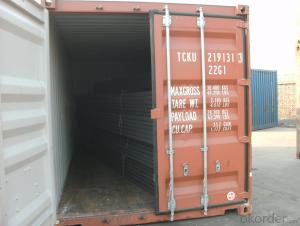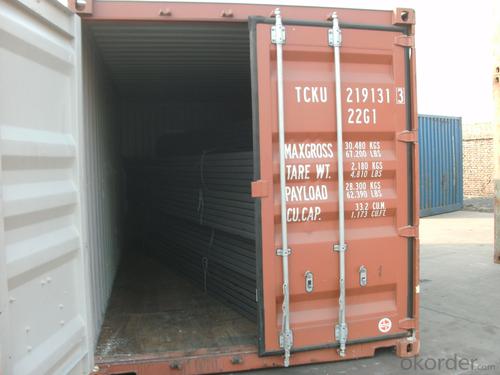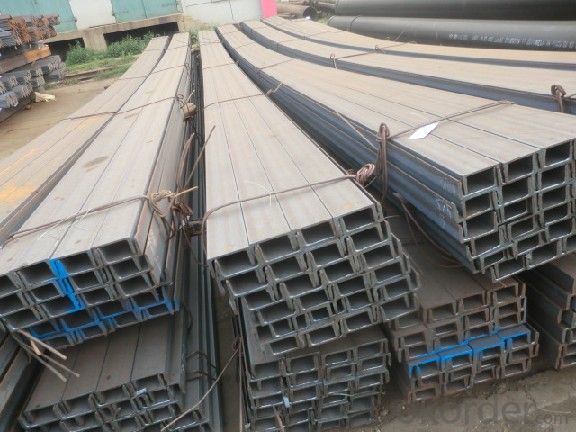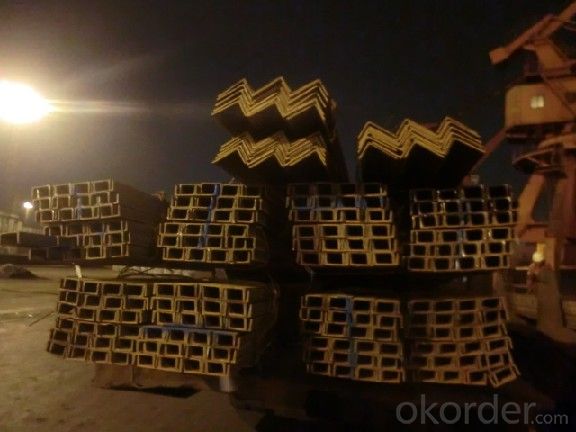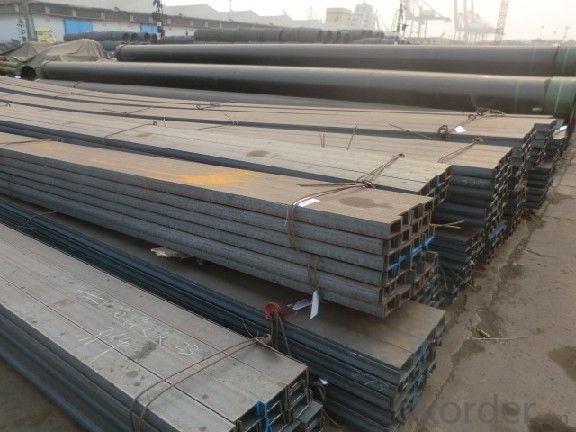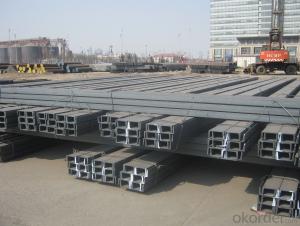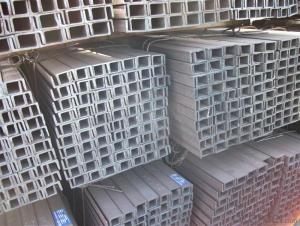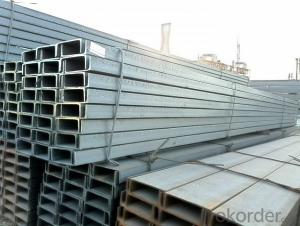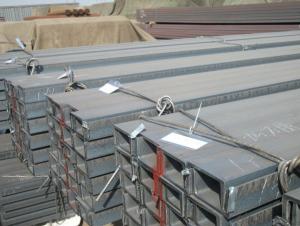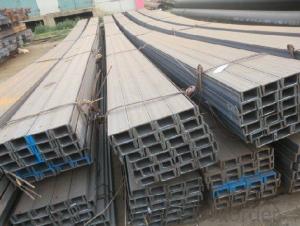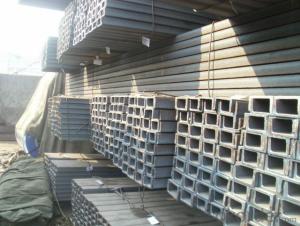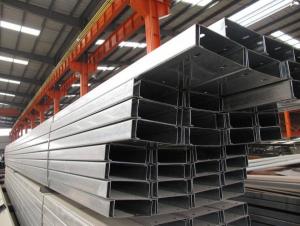Hot Rolled Steel High Qulity U-Chanle Made In China
- Loading Port:
- Tianjin
- Payment Terms:
- TT OR LC
- Min Order Qty:
- 50 m.t.
- Supply Capability:
- 3000 m.t./month
OKorder Service Pledge
OKorder Financial Service
You Might Also Like
Specification
Product Description:
OKorder is offering Hot Rolled Steel High Qulity U-Chanle Made In China at great prices with worldwide shipping. Our supplier is a world-class manufacturer of steel, with our products utilized the world over. OKorder annually supplies products to European, North American and Asian markets. We provide quotations within 24 hours of receiving an inquiry and guarantee competitive prices.
Product Applications:
Hot Rolled Steel High Qulity U-Chanle Made In China are ideal for structural applications and are widely used in the construction of buildings and bridges, and the manufacturing, petrochemical, and transportation industries.
Product Advantages:
OKorder's Hot Rolled Steel High Qulity U-Chanle Made In China are durable, strong, and resist corrosion.
Main Product Features:
· Premium quality
· Prompt delivery & seaworthy packing (30 days after receiving deposit)
· Corrosion resistance
· Can be recycled and reused
· Mill test certification
· Professional Service
· Competitive pricing
Product Specifications:
GB U CHANNEL | Standard | Sectional | Dimension |
| Mass: |
| (mm) | (mm) | (mm) | (mm) |
|
50X37 | 50 | 37 | 4.50 | 7.0 | 5.438 |
63X40 | 63 | 40 | 4.80 | 7.5 | 6.634 |
80x43 | 80 | 43 | 5.00 | 8.0 | 8.045 |
|
|
|
|
|
|
100x48 | 100 | 48 | 5.30 | 8.5 | 10.007 |
120x53 | 120 | 53 | 5.50 | 9.0 | 12.059 |
140x58 | 140 | 58 | 6.00 | 9.5 | 14.535 |
140x60 | 140 | 60 | 8.00 | 9.5 | 16.733 |
|
|
|
|
|
|
160x63 | 160 | 63 | 6.50 | 10.0 | 17.240 |
160x65 | 160 | 65 | 8.50 | 10.0 | 19.752 |
|
|
|
|
|
|
180x68 | 180 | 68 | 7.00 | 10.5 | 20.174 |
180x70 | 180 | 70 | 9.00 | 10.5 | 23.000 |
|
|
|
|
|
|
200x73 | 200 | 73 | 7.00 | 11.0 | 22.637 |
200x75 | 200 | 75 | 9.00 | 11.0 | 25.777 |
|
|
|
|
|
|
220x77 | 220 | 77 | 7.00 | 11.5 | 24.999 |
220x79 | 220 | 79 | 9.00 | 11.5 | 28.453 |
|
|
|
|
|
|
250x78 | 250 | 78 | 7.00 | 12.0 | 27.410 |
250x80 | 250 | 80 | 9.00 | 12.0 | 31.335 |
250x82 | 250 | 82 | 11.00 | 12.0 | 35.260 |
|
|
|
|
| |
280x82 | 280 | 82 | 7.50 | 12.5 | 31.427 |
280x84 | 280 | 84 | 9.50 | 12.5 | 35.823 |
280x86 | 280 | 86 | 11.50 | 12.5 | 40.219 |
|
|
|
|
|
|
300x85 | 300 | 85 | 7.50 | 13.5 | 34.463 |
300x87 | 300 | 87 | 9.50 | 13.5 | 39.173 |
300x89 | 300 | 89 | 11.50 | 13.5 | 43.883 |
Package & Delivery of Channel Steel:
The steel u channel will be packed in bundle with steel wire at each end of every bundle and color marking in order to help the customer to recognize his goods more easily at sight.
And steel u channel could be loaded into 20ft or 40ft container, or by bulk cargo. If the weight of each bundle reaches less than 3.5 mt, the loading by break bulk cargo should be choosed. When the weight of each bundle reaches less than 3mt, the loading by container should be choosed.
As for the transportaion from mill to loading port, the truck will be usually used. And the maximum quantity for each truck is 40mt.
FAQ:
Q1: Why buy Materials & Equipment from OKorder.com?
A1: All products offered byOKorder.com are carefully selected from China's most reliable manufacturing enterprises. Through its ISO certifications, OKorder.com adheres to the highest standards and a commitment to supply chain safety and customer satisfaction.
Q2: How do we guarantee the quality of our products?
A2: We have established an advanced quality management system which conducts strict quality tests at every step, from raw materials to the final product. At the same time, we provide extensive follow-up service assurances as required.
Q3: How soon can we receive the product after purchase?
A3: Within three days of placing an order, we will begin production. The specific shipping date is dependent upon international and government factors, but is typically 7 to 10 workdays.
Q4: What makes stainless steel stainless?
A4: Stainless steel must contain at least 10.5 % chromium. It is this element that reacts with the oxygen in the air to form a complex chrome-oxide surface layer that is invisible but strong enough to prevent further oxygen from "staining" (rusting) the surface. Higher levels of chromium and the addition of other alloying elements such as nickel and molybdenum enhance this surface layer and improve the corrosion resistance of the stainless material.
Q5: Can stainless steel rust?
A5: Stainless does not "rust" as you think of regular steel rusting with a red oxide on the surface that flakes off. If you see red rust it is probably due to some iron particles that have contaminated the surface of the stainless steel and it is these iron particles that are rusting. Look at the source of the rusting and see if you can remove it from the surface.
Images:
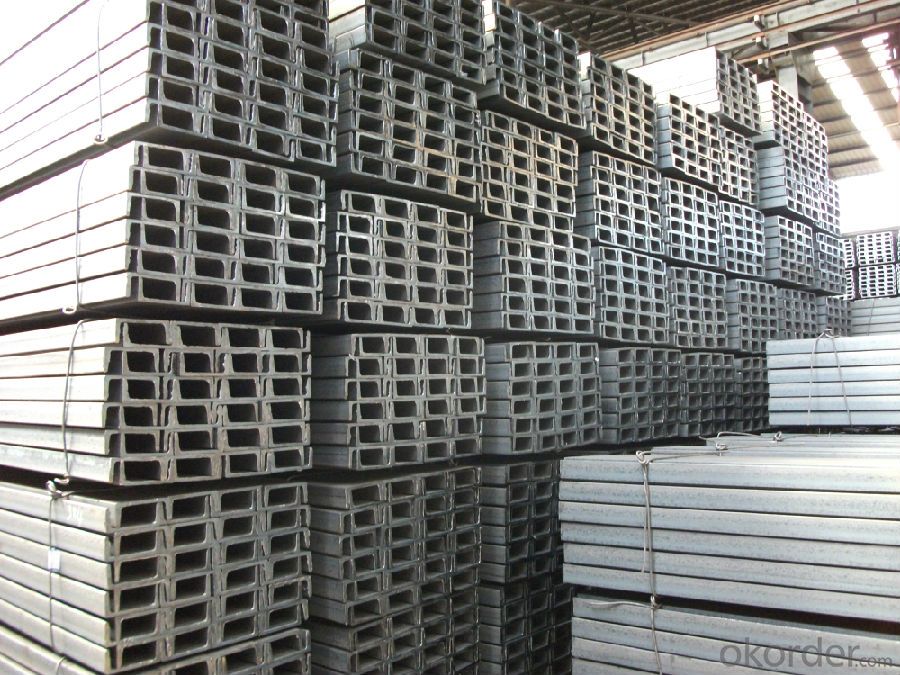
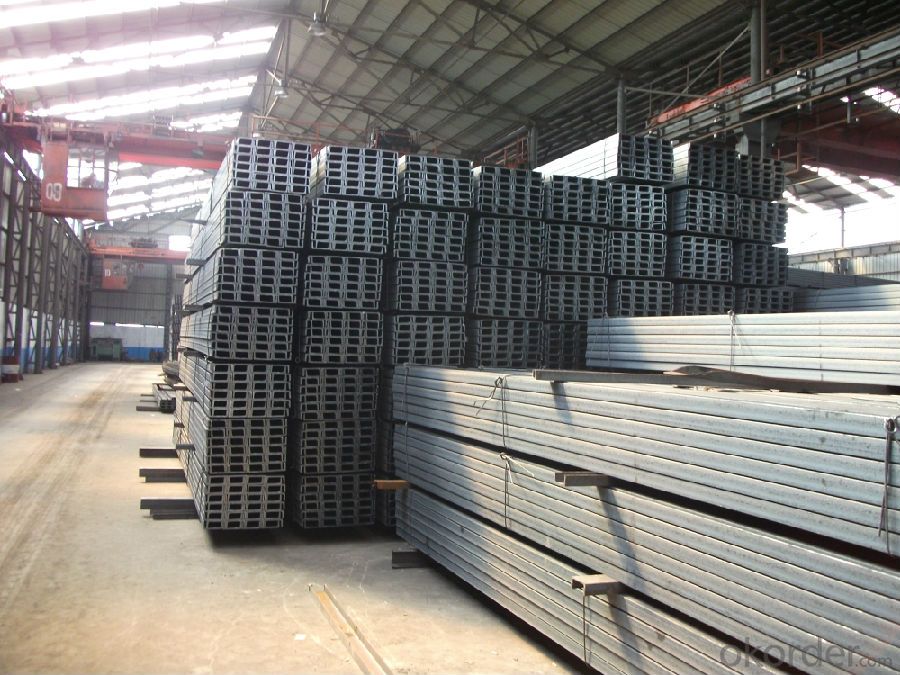
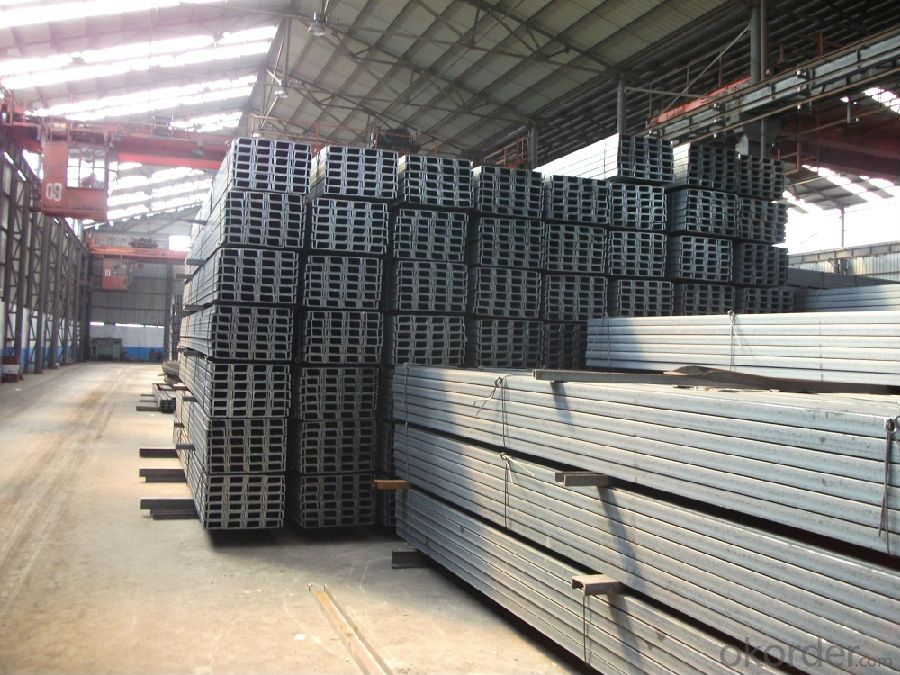
- Q: Galvanized steel plate, channel steel, angle steel how to take samples, how to submit?
- Galvanized steel plate, channel steel, angle steel how to take samples, how to submit?
- Q: How do steel channels contribute to energy-efficient lighting design?
- Steel channels contribute to energy-efficient lighting design in several ways. Firstly, steel channels are commonly used to create efficient lighting fixtures such as linear LED light fixtures. These fixtures are designed to maximize the distribution of light, ensuring that a significant portion of the emitted light is directed towards the intended area. By using steel channels to create these fixtures, the light can be directed in a controlled and efficient manner, reducing the amount of wasted light and increasing the overall efficiency of the lighting system. Secondly, steel channels can be used to mount and position lighting fixtures in a way that optimizes their effectiveness. By using steel channels, lighting fixtures can be easily adjusted and positioned to direct light precisely where it is needed, minimizing any unnecessary spillage and improving the overall lighting efficiency. This allows for better illumination of specific areas while reducing light pollution and unnecessary energy consumption. Furthermore, steel channels can also be utilized to improve the thermal management of lighting systems. LED lights generate less heat compared to traditional lighting sources, but they still require proper cooling to maintain their efficiency and longevity. Steel channels can be designed to dissipate heat efficiently, acting as a heat sink for the lighting fixtures. By effectively managing the heat generated by the lighting system, the overall energy efficiency of the lighting design is enhanced, as excessive heat can degrade the performance and lifespan of the fixtures. In addition, steel channels offer durability and longevity, which are essential for energy-efficient lighting design. Steel is a robust and long-lasting material that can withstand harsh environments and provide support to lighting fixtures for extended periods. This means that once the fixtures are installed using steel channels, they can remain in place without the need for frequent replacements or repairs. This reduces maintenance costs, conserves resources, and contributes to the overall sustainability of the lighting system. In conclusion, steel channels play a crucial role in energy-efficient lighting design by enabling the creation of efficient fixtures, optimizing light distribution, enhancing thermal management, and providing durability. By utilizing steel channels in lighting design, the efficiency of the lighting system is improved, resulting in reduced energy consumption, lower maintenance costs, and a more sustainable lighting solution.
- Q: Can steel channels be used for walkway supports?
- Yes, steel channels can be used for walkway supports. Steel channels are commonly used in construction due to their strength and durability, making them suitable for providing structural support for walkways.
- Q: Can steel channels be used for framing walls?
- Yes, steel channels can be used for framing walls. They provide a strong and durable framework for constructing walls and can be an excellent alternative to traditional wood framing. Steel channels offer superior strength and resistance to warping, shrinking, and termite damage. Additionally, they are lightweight and easy to work with, making them a popular choice in many construction projects.
- Q: Standard size and price of 12# channel steel...
- According to the 05 building system quota, the specification 120*53*5.5 (unit mm), the unit price is 4739.90 yuan per ton.
- Q: What is the difference between channel steel and angle steel?
- The cross section of the channel steel is concave, and the cross section of the angle steel is L, forming a 90 degree angle
- Q: Can steel channels be used in the automotive manufacturing industry?
- Yes, steel channels can be used in the automotive manufacturing industry. Steel channels are commonly used as structural components in the automotive industry due to their strength, durability, and versatility. They are used in various applications such as chassis frames, suspension systems, and body structures. Steel channels provide excellent load-bearing capabilities and can withstand the rigorous demands of the automotive industry. Additionally, their ability to be easily fabricated and welded makes them a preferred choice for automotive manufacturers.
- Q: Own attic, choose I-beam or channel?
- Channel steel: used for construction and mechanical use of carbon structural steel, is a complex cross-section of steel.Channel characteristics:Channel steel can change the structure of the building, and save construction materials.If the channel is constructed, it will be quick enough to be ready for use without waiting.
- Q: How do steel channels contribute to the stability of a structure during high winds?
- Steel channels contribute to the stability of a structure during high winds in several ways. Firstly, steel channels provide structural support and reinforcement to the overall framework of a building. They are typically used as beams or columns, and their strong and rigid nature helps to distribute the forces exerted by high winds throughout the structure. This effectively prevents the building from swaying or collapsing under the intense wind pressure. Additionally, steel channels offer excellent resistance to bending and torsion, making them capable of withstanding the dynamic loads associated with high winds. Their robustness ensures that the structure remains intact and maintains its shape even in the face of strong gusts. Moreover, steel channels can be strategically positioned in critical areas of a building, such as corners or near openings, to further enhance its stability during high winds. By reinforcing these vulnerable points, the channels help to minimize the risk of structural failure or damage. Furthermore, steel channels are often used in conjunction with other structural elements, such as braces or cross beams, to create a more rigid and stable framework. This combination of different structural components effectively increases the overall strength and resilience of the building, providing further protection against the impact of high winds. In summary, steel channels play a crucial role in ensuring the stability of a structure during high winds. Their strength, rigidity, and ability to distribute and withstand forces contribute to the overall structural integrity, preventing the building from being compromised by the strong winds and keeping its occupants safe.
- Q: What are the different methods for cutting steel channels?
- There exist numerous techniques for cutting steel channels, each presenting its own advantages and disadvantages. Among the most frequently employed methods are the following: 1. Sawing: This method entails the utilization of a circular saw or bandsaw to sever the steel channel. It is a versatile technique, accommodating both straight and angled cuts. Nevertheless, it can be time-consuming and may produce a coarse finish that necessitates additional processing. 2. Shearing: Shearing involves the deployment of a specialized machine called a shear to sever the steel channel. It is a swift and efficient method, yielding clean and precise cuts. However, it is limited to straight cuts and may not be suitable for thicker or larger steel channels. 3. Cutting torch: A cutting torch employs a high-temperature flame to melt and sever the steel channel. It is commonly utilized for thicker or heavier steel channels and can yield smooth and precise cuts. Nonetheless, it necessitates skilled operators and can be more time-consuming than other methods. 4. Plasma cutting: Plasma cutting employs a plasma torch to sever the steel channel. It is a rapid and accurate method that caters to both straight cuts and intricate shapes. Nevertheless, it necessitates specialized equipment and may generate a heat-affected zone that requires additional processing. 5. Waterjet cutting: Waterjet cutting employs a high-pressure stream of water mixed with abrasive material to sever the steel channel. It is a precise and versatile method that yields clean and accurate cuts in various materials and thicknesses. However, it can be costly and may require skilled operators. 6. Laser cutting: Laser cutting employs a focused laser beam to sever the steel channel. It is an exceedingly precise method that produces intricate cuts with minimal heat-affected zone. However, it can be expensive and may require specialized equipment and operators. When selecting the appropriate method for cutting, it is essential to consider the thickness, size, and complexity of the steel channel, as well as the desired finish and the available resources.
Send your message to us
Hot Rolled Steel High Qulity U-Chanle Made In China
- Loading Port:
- Tianjin
- Payment Terms:
- TT OR LC
- Min Order Qty:
- 50 m.t.
- Supply Capability:
- 3000 m.t./month
OKorder Service Pledge
OKorder Financial Service
Similar products
Hot products
Hot Searches
Related keywords
